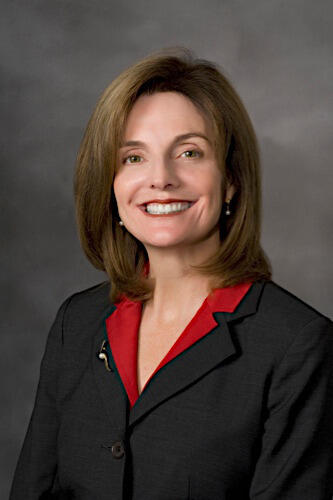
Aug. 16, 2017
VCU Health Pain Resource Nurse Program adopts ‘never just opioids’ approach for treatment
Share this story

Opioids: An American health crisis
Overdose deaths in the United States involving prescription opioids have quadrupled since 1999, according to the Centers for Disease Control and Prevention. Ninety-one Americans die daily from an opioid overdose and more than 1,000 are treated daily in emergency departments for not using prescription opioids as directed. In 2016, Gov. Terry McAuliffe and Virginia Health Commissioner Marissa Levine declared the opioid addiction crisis a public health emergency in Virginia.
At VCU and VCU Health, efforts are underway to combat this public health crisis — through addiction treatment, pain management, health care policy, education and research. This multipart series provides a snapshot of those efforts.
The overprescribing of legal drugs has contributed to the rising use of illegal drugs, particularly opioids, according to the Centers for Disease Control and Prevention and other local and national health officials chronicling the opioid epidemic.
And yet, a recent CDC report offers hope that medical professionals are making more thoughtful prescription decisions. The number of opioid prescriptions written by health care providers declined between 2012 and 2015, intimating that medical professionals have identified their hand in the issue and are making changes.
At VCU Health, nurses are studying alternative pain methods, and being taught how to address varied pain levels, responsibly. In 2013, VCU Health began its Pain Resource Nurse Program, an effort to improve care for those with pain and teach multi-modal treatment of acute/chronic cancer and non-cancer pain and addiction. Nurses can volunteer to take the nine-module course of study that applies a holistic examination of the experience of and treatment of pain, and includes education on evidence-based benefits of treating insomnia, anxiety and nausea. To date, more than 50 VCU Health nurses have participated in the program, which administrators are working to offer annually.
Before making treatment recommendations, instructors teach nurses to ponder questions: What is the character of the pain? What provokes or improves the pain? Is pain present all the time or does it come and go? This is an attempt at more judicious judgment among medical professionals at the bedside and beyond.
“There is a distinction between acute and chronic pain. We recognize total elimination of pain is not always possible, however our goal is to manage pain to a level acceptable to the person experiencing it while maximizing their function,” said Dawn Quinn, a VCU Health palliative care nurse who was a member of the program’s first cohort. She is also a charter member of the committee that now guides program operation.
Following a thorough assessment of a patient’s pain, nurses can determine optimal treatment. That may or may not include drugs, Quinn said, adding that nurses are now equipped with tangible, alternative treatment methods.
“Our theme was ‘never just opioids,’” she said. “With the support of leadership, we assembled and distributed comfort kits to all [nursing] units that included flameless pillar candles, CD/radio players with individual earbuds, sleep masks, ear plugs and puzzle books. We collaborated with our music department to create a custom CD with rhythm of 50-60 beats per minute, evidenced in literature to be most calming.”
Internal and external strides
The pain resource nurse committee — formed shortly after the program launched — identifies areas to improve pain management. The committee also determines educational needs and develops and drives educational programs at the unit and system levels. Committee participants meet monthly to share evidence-based practices, review data on patient perception to pain, create organizational policies, and solve problems.
Their work is being recognized externally, as well.
The committee developed a communication tool for nurses to use in advocating for pain relief, which was accepted for presentation at the 2017 National Magnet Conference, an event that recognizes health care organizations for promoting safe, positive work environments. Last fall the committee sponsored the first Virginia Commonwealth University Pain Symposium, which hosted professionals from the Richmond and Tidewater regions.

And then, there are the patient results.
“Through our Press Ganey patient satisfaction surveys, patients have told us that we have significantly improved in our attention to managing patient pain and showing concerns for their pain,” said Deborah T. Zimmerman, DNP, chief nursing officer and vice president of patient care services at Virginia Commonwealth University Medical Center.
Zimmerman was an early advocate for creating the Pain Resource Nurse Program to address pain management strategically.
“Pain management and patient satisfaction with pain control is an organizational priority,” she said. “Therefore, it made sense to support the development of unit-based nursing experts who facilitate best practice with peers on units, and drive organizational change.”
Custom versus customization
From 1991 to 2011, opioid prescriptions dispensed by U.S. pharmacies nearly tripled, from 76 million to 219 million, according a report on the National Institute on Drug Abuse website from IMS Health, a company that produces U.S. physician prescribing data.
CDC data indicates there is no evidence that opioids are an effective, long-term treatment. In years past, prescribing was based on custom and tradition taught in medical school that now pre-date an epidemic that has transcended economic and socioeconomic bounds, according to the CDC.
The emerging standard of care, however, is that each patient is diagnosed and treated based on their individual needs and tolerance to pain.
“Pain resource nurses consider targeted use of non-pharmacologic agents that may improve a patient’s pain experience, and reduce the amount or frequency of opioid use to achieve comfort,” Quinn said “[They] might also advocate for use of non-opioid agents such as acetaminophen or NSAIDs or medicines that target neuropathic pain if clinically appropriate. It’s not one prescription fits all. We take a hard look at what’s individually best.”
To date, the pain resource nurse committee has created an organizational pain escalation algorithm, guidelines for alternative approaches to opiates, and a system for ongoing formal education classes. Robust internal efforts are helping VCU Health stay ahead of this public health issue. This month, the new U.S. surgeon general, Jerome Adams, M.D., said opioids will be among a handful of health issues he will address during his term.
“VCU Health is committed to being a frontrunner in conquering the medical ills of the opioid epidemic,” Zimmerman said. “Our excellence begins at the point of care.”
Addiction resources
| The McShin Foundation 2300 Dumbarton Rd., Richmond, Va. 23228 (804) 249-1845 Recovering addicts and alcoholics |
Caritas (The Healing Place) 700 Dinwiddie Ave., Richmond, Va. 23224 (804) 358-0964 ext. 114 Addiction recovery resources for homeless men |
| FCCR Rehabilitation Center 4906 Radford Ave., Richmond, Va. 23230 (804) 354-1996 Specialized treatment options for alcohol abuse or substance abuse *Other locations in Midlothian and Fredericksburg |
Saara of Virginia, Inc. 2000 Mecklenburg St., Richmond, Va. 23225 (804) 762-4445 Alcohol and other drug addiction |
| Hanover County Community Services Board 12300 Washington Highway, Ashland, Va. 23005-7646 (804) 752-4200 (804) 752-4275 Alcohol and drug abuse |
Chesterfield Mental Health Services 6801 Lucy Corr Blvd., Chesterfield, Va. 23832 (804) 748-6356 Adult substance abuse services |
| Henrico Mental Health and Developmental Services 10299 Woodman Rd., Glen Allen, Va. 23060 (804) 727-8515 Treatment services for drug and alcohol abuse |
Richmond Behavioral Health Authority 107 S. 5th St., Richmond, Va. 23219 (804) 819-4000 Substance use and prevention services |
Subscribe to VCU News
Subscribe to VCU News at newsletter.vcu.edu and receive a selection of stories, videos, photos, news clips and event listings in your inbox.










